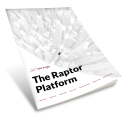If you’re among those looking to expedite product development, you probably know that the rapid controls prototyping (RCP) process is the most effective option.
Using a model-based design approach, RCP enables engineers to quickly create, edit, and iterate control strategies in a real environment on physical hardware. Developers can also test their control algorithms and make the appropriate corrections early within the design process when revisions are still inexpensive—and without the need for complex coding or integration.
Before Choosing a Prototyping System, Consider These Key Points
Many organizations use commercially available ‘Prototyping Systems,’ like ones from dSPACE, Speedgoat, or National Instruments. These systems, essentially, include a full personal computer (PC) in a hardened box, with additional input and output add-ons for interfacing with a physical system available.
Typically, these RCP solutions offer software tooling that allows engineers to:
- Develop MATLAB/Simulink models targeted and built to run on the embedded PC processor
- Interface with the real-world through the add-on input/output cards
 These units commonly have CPU and memory resources more similar to your laptop than what you normally find under the hood of a car…and they also tend to cost just as much as the car itself.
These units commonly have CPU and memory resources more similar to your laptop than what you normally find under the hood of a car…and they also tend to cost just as much as the car itself.
While it may be tempting to adopt such hardware due to its raw power and capabilities, it is useful to consider the context of other factors within a production program, including:
- Timing – Does your algorithm work on a non-production controller platform? If not, how can you make timing commitments? How can you know how long it will take to optimize your algorithm to fit the constrained production unit? How long will it take to design and build the production hardware?
- Risk – Are you building your algorithm on a high-powered processor with computer capabilities and memory resources that are not realistic for production volume or cost? Do you know if it can be implemented on production hardware? What happens if you find out that it can’t? Will it be back to the drawing board, or will it drive significant extra cost to the hardware?
- Cost – Does your development plan call for a small fleet or a number of test systems during the validation or testing phase? Is your commercial solutions for RCP going to cost as much as the vehicle they are being used in for testing?
New Eagle’s solution provides answers to all these issues by mitigating risk to reduce cost and time. 
Save Time and Money with Raptor
Our current embedded Model-Based Development (eMBD) platform, Raptor, helps customers move rapidly to production by implementing a full system development lifecycle—which includes RCP—directly on the production hardware.
Like high cost RCP tools, Raptor utilizes the intuitive model-based graphical programming environment of MATLAB/Simulink to easily create, edit, test, calibrate and debug application software. Unlike the traditional RCP tools, New Eagle’s hardware takes you directly to production.
The Raptor platform offers a variety of trusted electronic control units (ECUs) that range in pin count, input, output, memory, ASIL capabilities and processor configurations. Mass produced by major controller original equipment manufacturers (OEMs) and volume priced for scale, they enable users to automatically integrate controls software directly onto ruggedized, cost effective controllers during the development stages for an easy, direct scale into production.
With New Eagle’s tools, developers save time and money, all while avoiding surprises in production…isn’t it time you start using it?
Download the Raptor eBook to Learn More — It’s FREE!
Dive deep into how Raptor can expedite your development process by requesting your complimentary copy today!




